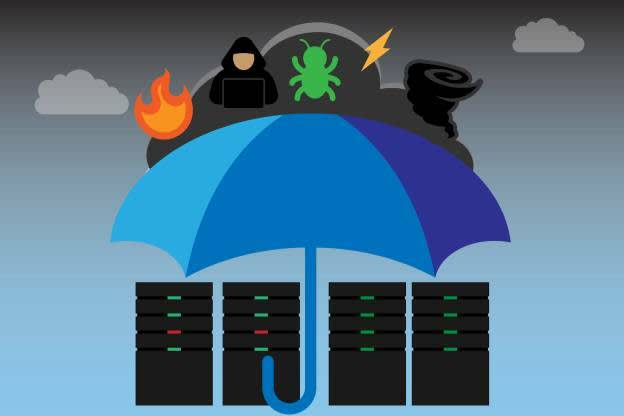Build a Disaster Recovery Plan
Learning Objectives
After completing this unit, you’ll be able to:
- Describe the importance of having a disaster recovery and continuity plan.
- List best practices for developing a disaster recovery plan.
Protect the Organization with a Disaster Recovery Plan
As society becomes more reliant on technology, and cyberattacks proliferate, strong organizations prepare for the worst. A major breach of mission-critical assets can have disastrous reputational, operational, and financial impact on an organization.
Fires, storms, blackouts, and other physical events are all unpredictable, yet their nature is generally well understood. Security threats, on the other hand, are both unpredictable and, given the rapidly advancing nature of cybercriminality, not generally well understood. A best practice is for organizations to update security recovery strategies even more frequently than disaster recovery strategies, and include cybersecurity leaders on the disaster recovery team.
 As a leader, you can use a disaster recovery and continuity plan to prepare for and recover from a disaster. This plan details security incident scenarios, how to protect your organization from potential cyberattacks, and how to react in case of a data breach. The plan reduces the amount of time it takes to identify breaches and restore critical services for the business.
As a leader, you can use a disaster recovery and continuity plan to prepare for and recover from a disaster. This plan details security incident scenarios, how to protect your organization from potential cyberattacks, and how to react in case of a data breach. The plan reduces the amount of time it takes to identify breaches and restore critical services for the business.
Best Practices for Developing a Disaster Recovery Plan
When developing your plan, follow these best practices:
-
Define your key assets. To successfully defend your organization against attack, you must first know what you’re protecting. Convene your management team to discuss the impact of potential losses and how to mitigate such threats.
-
Identify recovery solutions. After defining your organization’s most important assets, next determine the means of recovery in case of data breach and cyberattack. For example, plan to save data to a backup disk, server, or cloud storage—or perhaps completely replicate data to a secure offsite location.
-
Develop and communicate a governance plan. In the case of an emergency, everyone in the organization should know who is responsible for officially declaring a disaster and enacting a communication chain.
-
Review and practice your plan regularly. In order to put the plan into practice effectively, it is important that you review it with employees regularly, so everyone understands what to do when faced with a data breach or major cyberattack. Leadership and staff participate in tabletop exercises and simulations in order to test the plan. Be sure to update the plan in line with new policies and personnel changes.
In addition to a disaster recovery and continuity plan, also consider cyber insurance. While the overall cost of data breach detection is increasing as cyberattacks become more sophisticated, cyber liability insurance helps lower these costs.
Sum It Up
In this unit you’ve learned more about how and why organizations should put in place a disaster recovery plan. You’ve learned how to define key data, technology, and personnel assets, identify recovery solutions, and develop a communication plan. Now that you understand how to plan to recover from a disaster, let’s learn about the final piece of the puzzle in protecting your organization: creating a culture of cybersecurity.
Resources
-
External Site: IBM: Example Disaster Recovery Plan
-
PDF: NIST: Contingency Planning Guide for Federal Information Systems